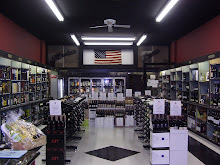Was the Hugo a good value? It was a car that sold for under five thousand dollars brand new. Is that value or just cheap? You may be asking what's the difference? The difference is quality. The perfect example is Santa Margherita Pinot Grigio. It is not a value because it is cheap. Not in price but in quality. I am not saying it is bad wine or criticizing anyones taste, I am saying that the quality of the product does not match the price. They produce one million cases of Pinot Grigio. Where can they get quality grapes for that many cases to justify the price point? They can't and that is why there is no value. Value is all about quality. A wine could cost $50 and still be a value because of the quality is higher then most other wines in the price point. Here are some other wines to check out that I think really bring a lot to the table.
Ritratti Pinot Grigio
From Trentino in Northern Italy. This is a pinot that has body, character, and quality that far exceeds its price. $15.99
Grayson Chardonnay
This wine is a perfect balance of fruit and oak with enough body to make you wonder why people would spend so much on KJ.
$9.99
Block Nine Pinot Noir
This is a perfect example of inexpensive of Pinot Noir. They blend in about 15% Syrah to give it a little more weight. This wine is medium bodied with lovely fruit notes of strawberry, raspberry and plum.
$11.99
Petra Zingari
A blend of Merlot, Syrah, and Alicante this is a home run of a Super Tuscan. Rich and dense with amazing spice notes and a core of rich dark fruit. Great structure and a impressive mouth feel and finish.
$14.99
These are just a few wines that I think are amazing at their price points. Please feel free to contact me for other suggestions.
Ritratti Pinot Grigio
From Trentino in Northern Italy. This is a pinot that has body, character, and quality that far exceeds its price. $15.99
Grayson Chardonnay
This wine is a perfect balance of fruit and oak with enough body to make you wonder why people would spend so much on KJ.
$9.99
Block Nine Pinot Noir
This is a perfect example of inexpensive of Pinot Noir. They blend in about 15% Syrah to give it a little more weight. This wine is medium bodied with lovely fruit notes of strawberry, raspberry and plum.
$11.99
Petra Zingari
A blend of Merlot, Syrah, and Alicante this is a home run of a Super Tuscan. Rich and dense with amazing spice notes and a core of rich dark fruit. Great structure and a impressive mouth feel and finish.
$14.99
These are just a few wines that I think are amazing at their price points. Please feel free to contact me for other suggestions.

